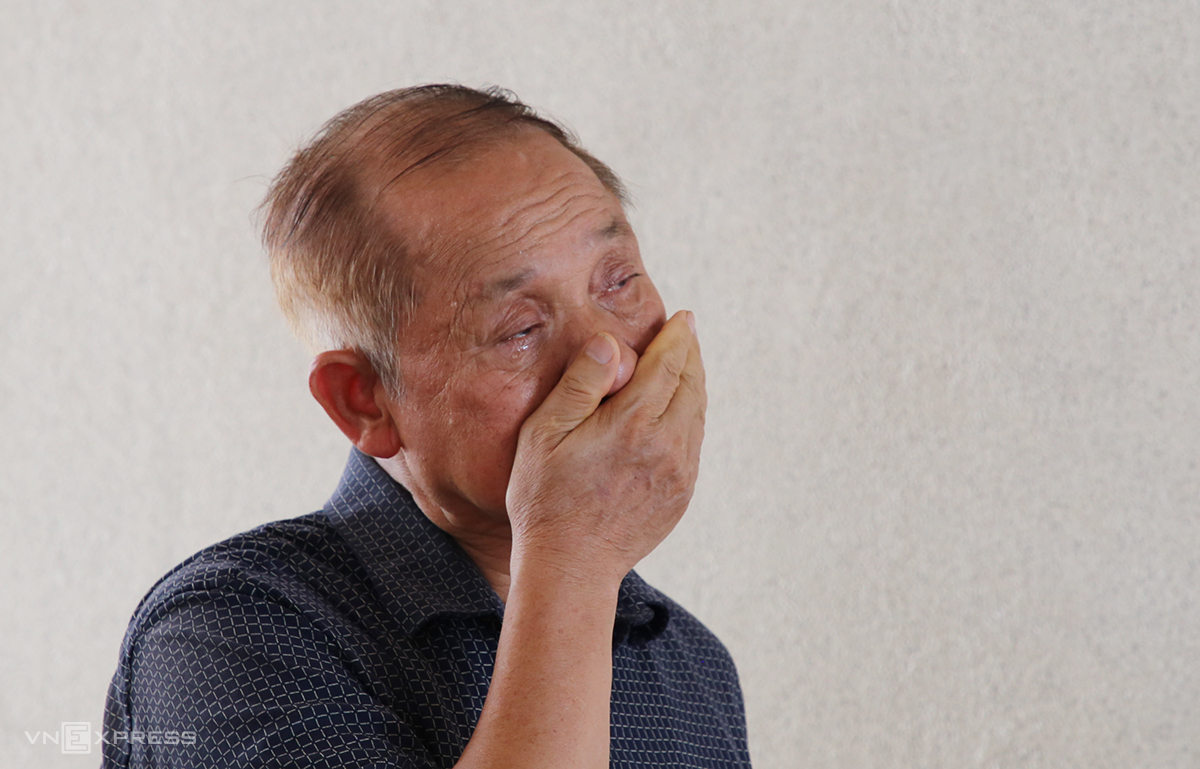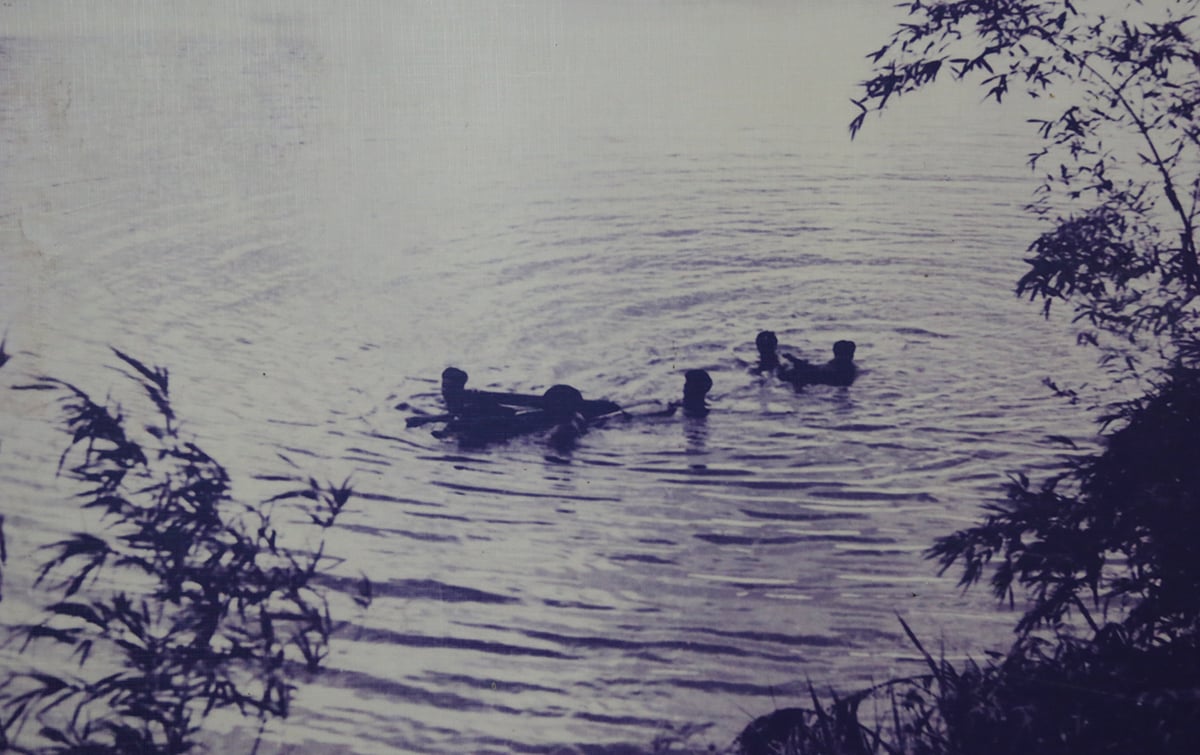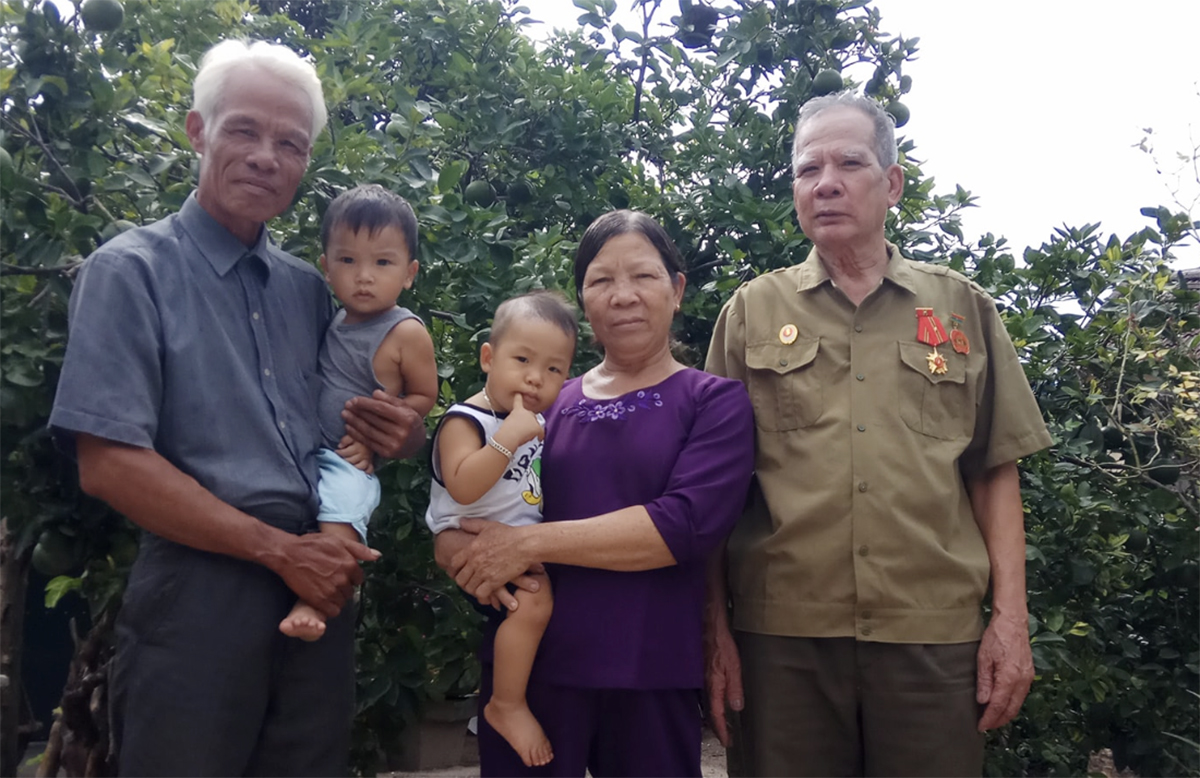In mid-September, 75-year-old Le Kim Nghiem from Phu Tho led a group of 10 relatives to visit the Quang Tri citadel. On his third visit, stepping through the main gate, he paused, gazing at the memorial, a collective tomb for thousands of soldiers. "I remember my comrades who fought alongside me," he said.
Carrying offerings and a wreath, he asked his family to arrange a guide at the historical site, requesting a direct narrative without pre-recorded audio, so his relatives could fully grasp the pain and loss embodied by the place.
"They will explain the intensity of the 81-day battle. They'll share how many young men fell during the Republic of Vietnam's counteroffensives to defend every inch of land, every house, reminding us not to forget the sacrifices of the previous generation," he explained.
Nghiem enlisted in 1971 at the age of 19. After training, he arrived in Quang Tri in early 1972, serving as a signalman in the 18th Company, 9th Regiment, 304th Division. During the 1972 Spring-Summer Offensive, his unit was pushed across the My Chanh River into Thua Thien by the US-backed Republic of Vietnam forces.
Having lost the strategic base at Quang Tri on 15/1/1972 and facing the potential loss of Thua Thien province, jeopardizing the Vietnamization policy, the US reinforced the Republic of Vietnam army to recapture Quang Tri, particularly the citadel. This area held significant political and diplomatic weight, directly influencing the parties' positions in the Paris peace talks.
Under counterattack, Nghiem's unit retreated north of the Thach Han River. When the Republic of Vietnam launched counteroffensives, codenamed "Lam Son 72", to retake Quang Tri, initiating the 81 days and nights of bombardment on the citadel, Nghiem's duty was charging batteries for his comrades' radios and fighting as an infantryman.
"I was wounded, taken across the Thach Han River for treatment, and then returned to combat," he recounted.
 |
Le Kim Nghiem weeps as the guide describes the fierce fighting. Photo: Dac Thanh |
In 1973, with the signing of the Paris Peace Accords, the wounded Nghiem was transferred north for treatment and further education. When the northern border war broke out in 1979, he served another 10 years in Vi Xuyen, Ha Giang province. Having experienced numerous battlefields and hundreds of engagements, he considers the Quang Tri citadel the "most brutal".
Every day, troops of 18-20 year olds, many having never held a girl's hand or experienced a first kiss, crossed the Thach Han River into the citadel to fight and die. "They knew it was a death sentence, but for the nation, they were willing to go. An entire generation of youth spared no blood," he said.
Some platoons sent into the citadel were entirely wiped out overnight. Of Nghiem's company, divided into three teams, he found no surviving comrades after the 81-day battle.
In 1999, Nghiem first returned to the citadel, offering incense to his comrades at the memorial and releasing floating lanterns on the Thach Han River. Four years later, after retiring, he returned on July 27th to honor the fallen. Now, at 75, with declining health, he brought his family for this third visit.
Listening to the guide's narrative, memories resurfaced, bringing Nghiem to tears, at times covering his mouth to stifle his sobs. "Being here to light incense, seeing the citadel and the Thach Han River, now wider and deeper, brings me peace," he shared.
 |
Soldiers of the 4th Company, 8th Platoon crossing the river to reinforce the citadel. Photo: Quang Tri Citadel Museum |
Returning to find the ferryman and his daughter
Like Nghiem, 80-year-old veteran Pham Van Hung, a former soldier of the 74th Battalion, Intelligence Department (General Staff), has visited the citadel 13 times. He intends to return every July, the month of honoring fallen heroes, as long as his health permits.
Enlisting in 1966, Hung served in various battlefields across Quang Tri, from mountains to plains. Before the 81-day battle, he conducted reconnaissance in the citadel. Like his comrades, he held his position within the citadel and Quang Tri town.
Hung's unit comprised 120 men, including a crypto-communications team, with the rest divided into four reconnaissance teams, each operating independently. After over a month of fighting, on 2/8/1972, he was severely wounded and transferred to a bunker beneath the provincial governor's mansion, the command post of the National Liberation Front.
A tunnel from the mansion led to the Thach Han River, where Hung waited to be transported across for treatment. During the transfer, he was again hit by American bombs. With injuries all over his body, he was placed on a boat.
"Lying on the boat, I could only open one eye and saw a shirtless man with a muscular build and black teeth. A young woman was also on board. They got me across the river just in time for treatment," he recalled, the image etched in his memory.
After treatment in the north, Hung recovered and left the army in February 1973. Of the 120 men in his unit, 72 were killed, 19 of whom are interred at Road 9 Martyrs' Cemetery. Hung went on to university and worked at the Thai Nguyen Iron and Steel Plant.
After reunification, he returned to the Quang Tri citadel to visit his comrades and search for the ferryman. He visited villages along the Thach Han River, describing the ferryman, but no one recognized him.
"In late 1992, at the inauguration of the citadel memorial, I noticed a photo titled 'Trieu Phong fisherman and his daughter transporting soldiers and weapons to support the citadel', taken by journalist Doan Cong Tinh. After 20 years, a single glance confirmed that it was the man who ferried me," he said.
He inquired about the people in the photo with the site's management and learned that the man had passed away, but the young woman, Nguyen Thi Thu, was living in Giang Hen village, Trieu Giang commune. Overjoyed, he visited his benefactor to express his gratitude and invited Thu and her husband to visit the north.
 |
Hung (right) during a visit to Thu and her husband. Photo: Provided by the subject |
On July 27th or September 2nd, especially after the release of the film "Mua Do" (Red Rain), many people like Nghiem and Hung visit the Quang Tri citadel. They return to remember the wartime years, honor their comrades and the locals who helped them, and remind younger generations of the sacrifices made.
Dac Thanh












